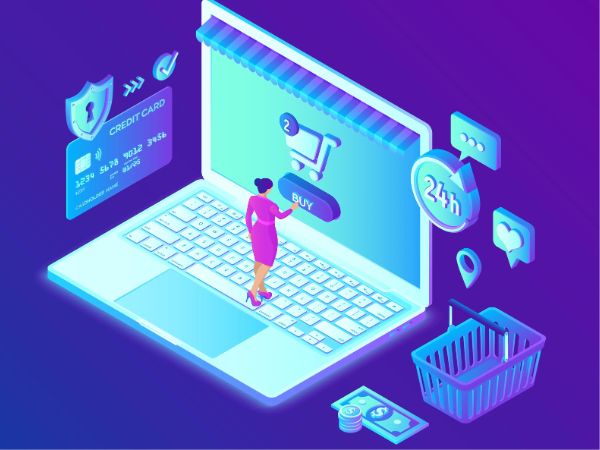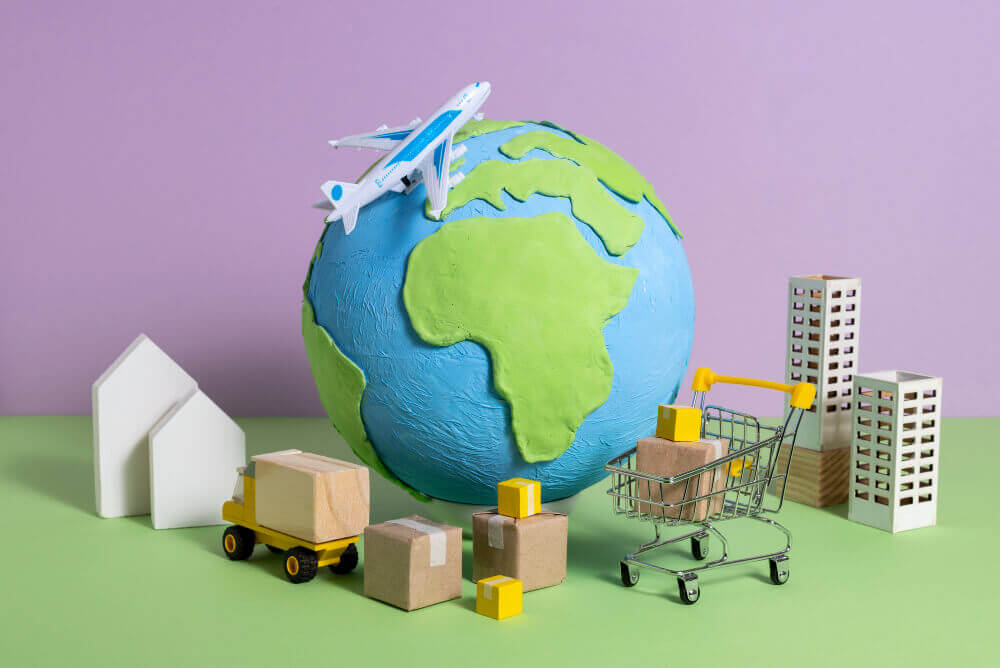In the fast-paced world of e-commerce, the process of fulfilling an order can seem deceptively simple: a customer places an order, and a package arrives. However, behind every successful transaction lies a complex, dynamic system of logistics. For any business, understanding the intricacies of an order fulfillment service for e-commerce is not just about operations—it’s about mastering the very fundamentals of a scalable business.
This guide will walk you through the essential “ABCs” of order fulfillment, providing foundational knowledge that goes beyond a simple checklist. If you’ve ever wondered about the inner workings of a fulfillment center or the strategic decisions behind a successful delivery, this is the essential knowledge you need.
How Does an Order Fulfillment Service for E-commerce Actually Work?

At the heart of every great fulfillment service is a highly optimized physical and digital hub. It’s more than just a warehouse; it’s a finely tuned machine built for speed and accuracy.
The Physical Anatomy:
A modern fulfillment hub is a complex ecosystem. It’s designed to minimize the time from “pick” to “pack.” Products aren’t just thrown onto shelves; they are stored based on size, velocity (how often they sell), and kitting requirements. The layout might include:
- Pallet Racking: For bulk storage of large shipments.
- Bin Shelving: For individual small items.
- Flow Racking: For high-volume, fast-moving items, designed for easy access.
- Picking Zones: Dedicated areas where teams or automated systems pick items for orders.
The flow is meticulously planned: receiving docks where incoming inventory is processed, storage zones, a dedicated packing area, and a shipping department where packages are sorted and handed off to carriers.
The Digital Anatomy:
The physical space is useless without its digital brain: the Warehouse Management System (WMS). This software is the engine that drives the entire operation. It communicates seamlessly with your e-commerce platform, receives order data, directs pickers to the exact location of each item, tracks inventory in real time, and manages the entire shipping process. The WMS ensures that a single SKU isn’t just a product—it’s a scannable, trackable, and manageable asset from the moment it enters the facility.
What Makes for a Good Order Fulfillment Service for E-commerce Partner?
Choosing an order fulfillment service is not a transactional decision; it’s about building a strategic partnership that can support your business’s long-term vision. This involves looking beyond just price and focusing on compatibility.
Technology Integration: A key aspect of a successful partnership is seamless technology. A fulfillment partner’s system should integrate with your e-commerce platform (like Shopify or Magento) with minimal friction. This automated connection ensures that order data flows instantly and accurately, eliminating manual entry and reducing the risk of errors.
Shared Vision and Communication: A good partner doesn’t just process orders; they offer insights. They should be able to provide you with data and analytics that help you optimize your logistics strategy, from reducing shipping costs to identifying your most popular SKUs. This level of communication turns a vendor relationship into a collaborative one.
(For more detailed insights on how to choose a fulfillment partner, you can check out our previous article, What to Look for in a Fulfillment Service Partner.)
How Can an Order Fulfillment Service for E-commerce Improve Customer Experience?
While logistics can seem purely operational, its ultimate goal is to delight the customer. A great fulfillment service uses its capabilities to elevate the customer experience.
Models of Fulfillment: There are two primary models for an order fulfillment service for e-commerce:
- B2C (Business-to-Consumer) Fulfillment: This is the most common model, where a fulfillment company ships individual orders directly to the end customer. Speed, accuracy, and a positive unboxing experience are paramount.
- B2B (Business-to-Business) Fulfillment: This involves shipping large, bulk orders to other businesses, like retailers or distributors. It has different requirements, including palletized shipping, specific labeling, and adherence to retailer compliance standards.
The Unboxing Experience: A crucial aspect of B2C fulfillment is the final package. A fulfillment partner can help you enhance your brand with custom-branded boxes, inserts, and packaging materials. This small touch transforms a simple delivery into a memorable brand interaction.
Returns Management (Reverse Logistics): The customer journey doesn’t end with delivery. A great fulfillment service also handles returns efficiently. Known as reverse logistics, this process ensures returned products are received, inspected, and processed according to your business rules, whether they are restocked, refurbished, or disposed of. A smooth returns process builds customer trust and encourages future purchases.
How Does Data from an Order Fulfillment Service for E-commerce Help a Business?

The digital side of a fulfillment service provides a wealth of data that you can use to make smarter business decisions. This is where you move from reacting to problems to proactively optimizing your operations.
Key Performance Indicators (KPIs): Your fulfillment partner’s dashboard should provide real-time data on KPIs like:
- Order Accuracy: The percentage of orders shipped with the correct items.
- On-Time Shipping: The percentage of orders shipped within the promised timeframe.
- Cost Per Shipment: Breaking down all the costs associated with each order.
- Inventory Turnover: How quickly your inventory is being sold, helping you manage stock levels and avoid dead stock.
By analyzing this data, you can identify trends, forecast future demand, and optimize your inventory strategy. For example, if you see shipping costs to one region are consistently high, you might consider distributing your inventory to a fulfillment center closer to that customer base.
Is an Order Fulfillment Service for E-commerce Secure?
Your inventory is your business’s lifeblood, and it’s critical that it’s protected from theft, damage, or loss. A reputable fulfillment service has robust security measures in place.
Physical Security: A modern fulfillment center has round-the-clock security, including video surveillance, restricted access points, and secure storage areas for high-value items.
Risk Management and Insurance: Your partner should have comprehensive insurance to cover inventory loss or damage, and clear protocols for handling unforeseen events like natural disasters or power outages. This provides peace of mind knowing your assets are protected.
What Are the Costs of an Order Fulfillment Service for E-commerce?
Understanding the financial model of an order fulfillment service is crucial for managing your budget and profitability. The cost is never a single line item; it’s a tiered structure based on the services provided.
- Receiving Fees: A fee to process incoming inventory. This can be per-pallet, per-case, or per-hour.
- Storage Fees: Charged for the space your inventory occupies in the warehouse. This is often calculated per-cubic foot or per-pallet per month.
- Pick & Pack Fees: The core cost of labor for picking items and packing the order. This is usually a base fee per order, plus a small fee per additional item.
- Packaging Fees: Costs for boxes, poly mailers, packing materials, and labels.
- Shipping Costs: The most variable cost, determined by package weight, dimensions, destination, and shipping speed.
For small businesses, these cost efficiencies are particularly vital, transforming what was a huge operational burden into a scalable solution. To learn more about how fulfillment is essential for growing brands, read our article Why E-commerce Fulfillment Service Are Essential for Small Businesses.
Can an Order Fulfillment Service for E-commerce Help with Global Expansion? 
As your business grows, so do your ambitions. An order fulfillment service for e-commerce can be your gateway to international markets without the need for you to set up foreign operations.
International Fulfillment: An experienced partner can help you navigate the complexities of international shipping, including customs forms, duties, taxes, and local shipping regulations. Some have a network of fulfillment centers around the globe, allowing you to store inventory closer to international customers for faster, more affordable delivery.
Localization: Offering international customers localized services, such as a local return address, can build trust and make global expansion more seamless.
Conclusion: Mastering the Fundamentals
The “ABCs” of order fulfillment are more than just a list of services; they are a framework for understanding the essential pillars of a successful e-commerce business. By focusing on the anatomy of the hub, building a strategic partnership, embracing customer-centricity, and leveraging data, security, and smart financials, you can transform your logistics from a daunting task into a powerful competitive advantage.
It’s also important to remember that fulfillment is one critical part of a much larger network. To understand how it all fits together, from raw materials to final delivery, explore our comprehensive guide on A Complete Guide to Understand the Importance of Distribution in Logistics.
This foundational knowledge is the key to scaling your business efficiently and building a brand that consistently delights your customers with every delivery.
If you’re ready to master your e-commerce logistics and build a robust fulfillment strategy, visit Logistics770.com to explore our services and discover how we can help you turn knowledge into results.
